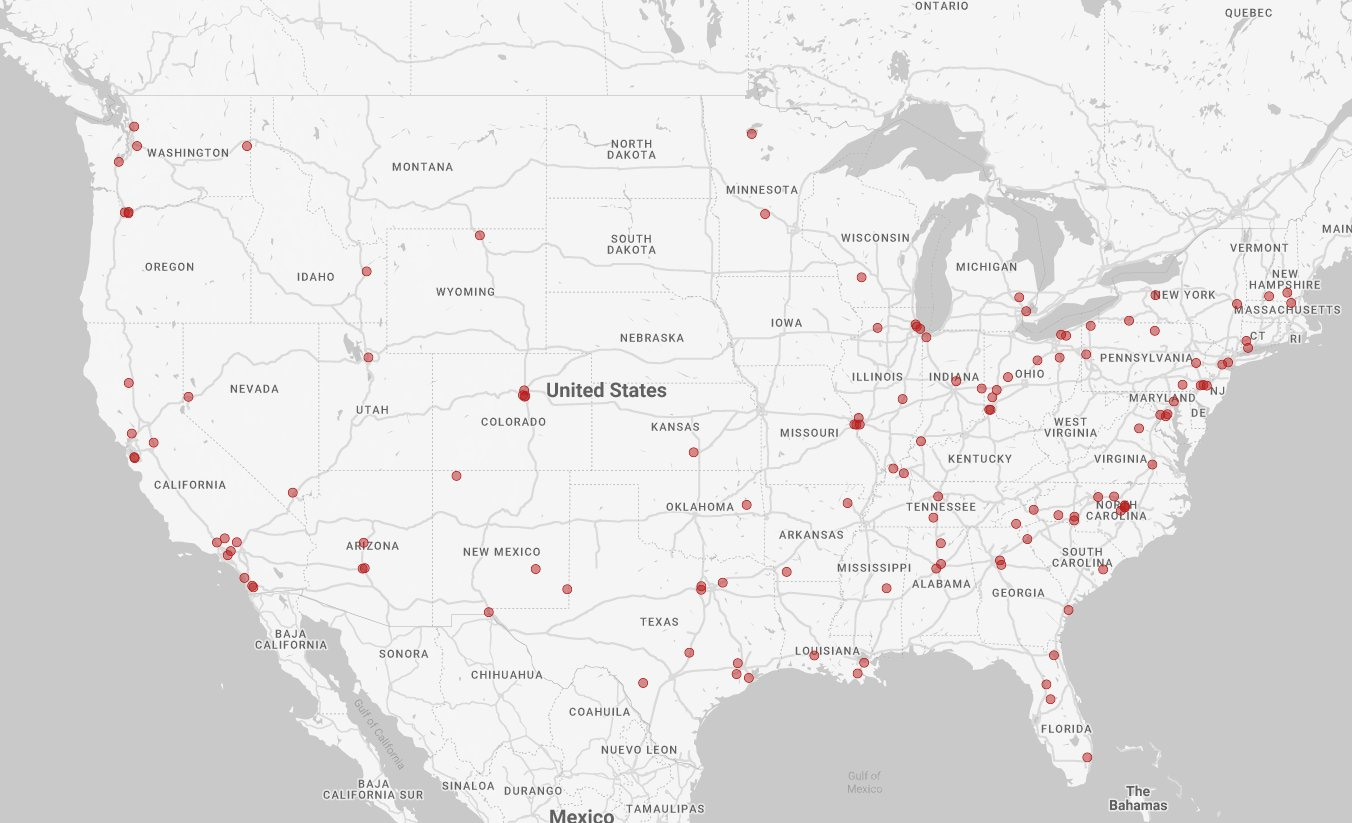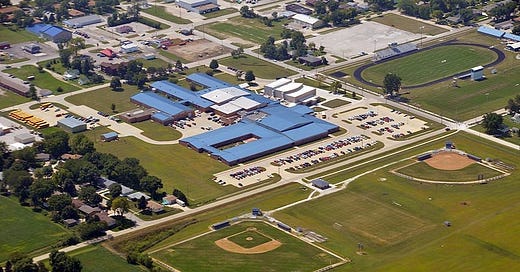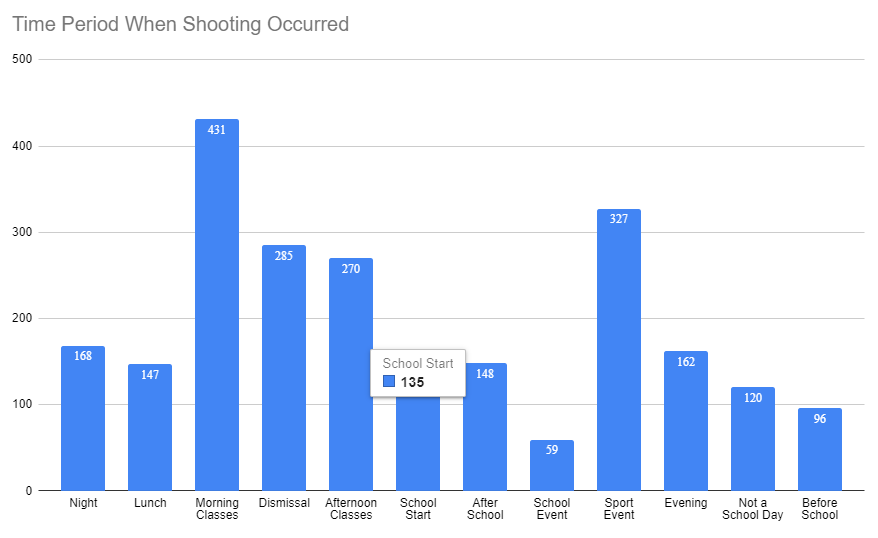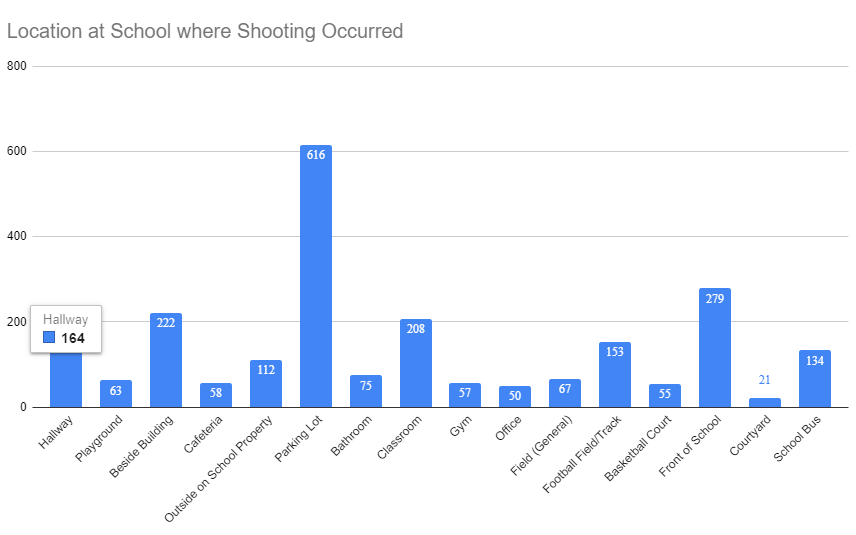Perry High School Shooting Follows the Same Patterns as Six Decades of Attacks
Most common scenario is an actively suicidal current or former student committing a surprise attack inside the school.
On the first day back from winter break, there was a school shooting before classes started at Perry Middle & High School on January 4, 2024. The combined campus is in Perry, Iowa, a small town of 7,800 about 35 miles from Des Moines. Thirteen minutes before 1st period classes, a 17-year-old with a shotgun and pistol opened fire inside the school. He killed a 6th grade classmate, wounded 4 other students, and killed the principal before taking his own life in the hallway.
Police responded for an “active shooter” at 7:37am and the first officer arrived on campus 7 minutes later (per press conference). Police determined the shooter was dead before officers found him. A school administrator and two students were transported to the closest trauma center in Des Moines (40 miles away). At least two students who were shot were able to self-evacuate from the school before being taken to the hospital by their parents.
A classmate told NBC News the shooter had been bullied relentlessly since elementary school. That escalated recently when his younger sister started getting picked on, too. When officials at the school didn’t intervene, that was “the last straw” for the shooter.
“He was hurting. He got tired. He got tired of the bullying. He got tired of the harassment,” Yesenia Roeder Hall, 17, said. “Was it a smart idea to shoot up the school? No. God, no.”
This shooting highlights four critical planning factors that are frequently overlooked by police and school administrators:
Planned attacks can happen before classes start. This is a time period when the school building is open but teachers, staff, and security either haven’t arrived yet, or are still getting ready for the day.
Most shootings at schools don’t take place inside a classroom. The shooting at Perry High was in the cafeteria and hallways.
Eight of the ten school shootings with the highest number of casualties happened in small communities (population less than 50,000).
School shootings are often planned as both shootings and bombings.
After every school shooting, people say “we never thought something like this could happen in our community”. The reality is that these attacks can happen anywhere including at a school with 600 students in rural Iowa.

Shootings Before Classes Start
Three weeks before the Parkland shooting in February 2018, a 15-year-old student killed 2 and wounded 18 at Marshall County High in Benton, KY. His planned attack occurred before classes started at 7:57am in a large hallway near the cafeteria. In March 2023 at 6:51am, a 15-year-old opened fire with a shotgun as students waited outside the front door of Lamar High in Arlington, TX. The doors to the school were locked until 7am and it was normal for students to wait on the steps outside each morning.
Most lockdown drills, active shooter trainings for police, and new equipment (e.g., fortified classroom doors, automatic locks, bulletproof chalkboards) assume a school shooting will occur while students are inside a classroom. Planned attacks can target the transition periods before school starts, while classes change, lunch, and dismissal. Just like Perry High School in Iowa, 135 shootings happened as the school building opened.
Many schools are installing metal detectors, which means that students need to line up near the front doors to the school. This screening process creates a situation where a large group of students congregate in the same area, and at the same time every day. This is exactly the scenario the Marshall County shooter planned for. At Perry High, if students were lined up outside while waiting for a metal detector screening, they would be vulnerable to a surprise attack by another student.
Hallways and Cafeteria
The shooting at Perry High School happened in the cafeteria and hallways before classes started. According to parents interviewed on local news, the cafeteria is a common place to gather before class because students arrive at staggered times from the long rural bus routes.
Over the last 60 years, more shootings have happen in the hallway and bathrooms (222 total) than inside classrooms (208). Most lockdown drills are designed for students being inside a classroom. How many schools have run a drill for a shooting before class or during lunch? How many police departments have trained for all these different time periods and locations?
Insider Attacks
School shootings are not random. These attacks are usually committed by current or former students who experienced trauma and develop a deep grievance that they blame on the school. They devolve to a point of crisis where they believe that violence is their only option, and they plan to die during the school shooting.
Per reports from another student at Perry High, the shooter was in crisis due to years of bullying and recent escalation of bullying directed at his sister. This attack was his “final act” when he felt that there were no other options and he intended to die during the school shooting. (Note: This pattern of crisis is not an excuse for violence, it is an explanation of why an attack happened and an opportunity to recognize warning signs before the next school shooting.)
Being a current student at the school (insider), the shooter was able to sneak the guns inside a duffle bag. Just moments before the shooting, he sent a final warning on TikTok with the message “Now We Wait” and a photo of the bag.
Another unresolved problem is the term “active shooter” describes six different situations that each require different planning, prevention, and response procedures. The shooting at Perry High was a surprise “insider attack” and the circumstances would be totally different if it was a heavily armed and armored former student shooting his way into the locked building (frontal assault like Uvalde).
School Shootings Can Also Be Bombings
Standard procedures at many schools across the country is to lockdown inside the building when shots are fired. This is an extremely dangerous action to take if there is also a bomb inside the school.
Many school shootings are planned as both shootings and bombings, including an averted plot in Texas in 2023 where the attacker had multiple assembled explosives with Nazi symbols drawn on them. Last year, a school shooter in Serbia had 4 Molotov cocktails that he didn’t ignite because students had already fled through a backdoor in the classroom. The journals from the Oxford High school shooter also contained plans to use Molotov cocktails.
Court records showed the Michigan State school shooter searched terms including “mass killings in college”, “the bomber”, and, “the nail bomber.” In 1986, a man and woman detonated a firebomb inside Cokeville Elementary during a hostage standoff causing burns to more than 70 students.
The shooter at Perry High School was armed with a shotgun, handgun, and improvised explosive device. If an attacker detonates an explosive, flammable liquid, or chemical inside a school, students who are barricaded inside of classrooms can become trapped as they are exposed to hazardous conditions.
The standard procedure in all public places for shootings, bombs, fire, and hazmat is for people to get as far away as possible, as fast as possible.
Preventing the Next Attack
There are three steps we can take to stop many school shootings:
1. Public education and standardized reporting system similar to “see something, say something” so that anyone who spots “red flags” can easily report them to police (read more: What can the average person do to prevent the next school shooting?)
2. Fully funded crisis intervention programs in every community to help someone who shows risk factors before they decide violence is their only option (see: The Off Ramp Project).
3. Pass federal ‘red flag’ law that enables authorities in every state to remove access to firearms from someone who is identified as a threat to themselves or others.
We must take action to prevent the next school shooting. As I said on the nightly news in the Czech Republic after the Prague university shooting before Christmas:
“In the United States, we have failed in all three of these areas. Even when people notice the warning signs here, there are often no measures in place to prevent someone from still getting a gun and carrying out these attacks.”
We can’t continue to accept these predictable school shootings as the status quo.
David Riedman is the creator of the K-12 School Shooting Database and a national expert on school shootings. Listen to my recent interviews on Freakonomics Radio and the New England Journal of Medicine.







